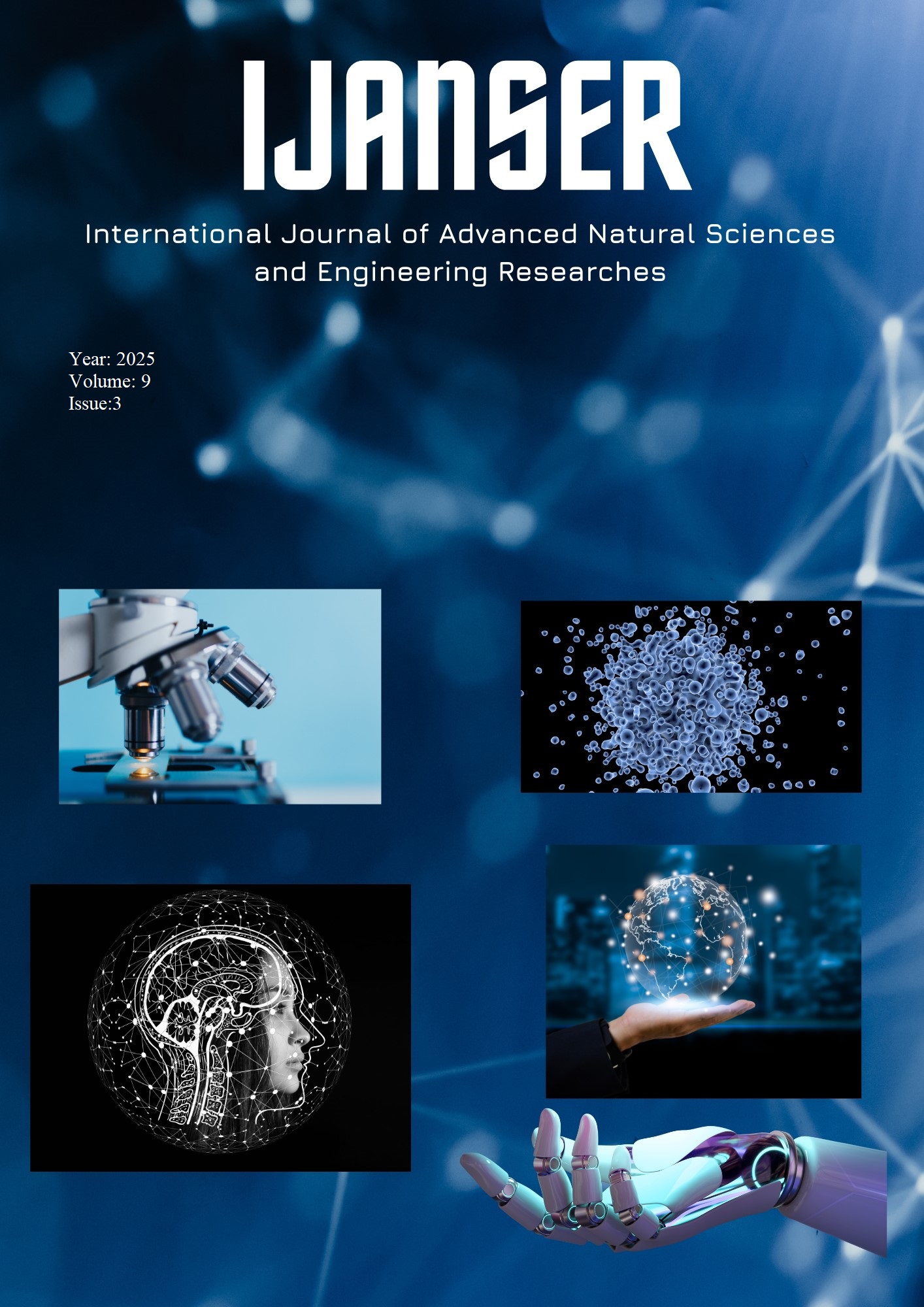Vibration of Time: Earthquake Magnitude Prediction Using Machine Learning and Graphical Representation of Earthquakes from 1900 to 2023
DOI:
https://doi.org/10.5281/zenodo.15038498Keywords:
Earthquake Prediction, Machine Learning, Risk Analysis, Artificial IntelligenceAbstract
An earthquake is a natural disaster that significantly impacts human life and structures. This
study aims to contribute to the understanding of this important issue through a comprehensive evaluation
of earthquakes from geological, seismological, and engineering perspectives. Hypotheses developed by
assessing the effects of plate tectonics, volcanic activities, and anthropogenic triggers on earthquakes
analyze the formation process and risk profiles of earthquakes. The strategic importance of determining the
risk profiles of geographical regions in terms of earthquake potential has been emphasized, with a focus on
earthquake zones and hazard analyses.
The dataset, consisting of earthquakes from 1900 onwards, was used as a sample, and various machine
learning models were applied to this data. Models used include Random Forest, Gradient Boosting,
XGBoost, Linear Regression, Ridge Regression, Lasso Regression, and Support Vector Regression. The
performance of these models in predicting earthquake magnitude was compared, and it was found that the
XGBoost model showed the best performance with the lowest Mean Squared Error (MSE).
The results demonstrate that machine learning models have significant potential in predicting earthquake
magnitudes. This study aims to evaluate community preparedness for earthquakes by addressing the role
of exploratory data analysis with artificial intelligence in earthquake risk analysis and prediction. By
providing a multifaceted analysis of earthquakes, this study makes an important contribution to the
academic literature.
Downloads
References
M. Aamir, T. Ali, M. Irfan, A. Shaf, M. Z. Azam, A. Glowacz, F. Brumercik, W. Glowacz, S. Alqhtani, ve S. Rahman, "Natural Disasters Intensity Analysis and Classification Based on Multispectral Images Using Multi-Layered Deep Convolutional Neural Network," Sensors, vol. 21, no. 8, p. 2648, 2021, doi: 10.3390/s21082648.
A. Ahmouda, H. H. Hochmair, ve S. Cvetojevic, "Analyzing the effect of earthquakes on OpenStreetMap contribution patterns and tweeting activities," Geo-Spatial Information Science, vol. 21, no. 3, pp. 195–212, 2018, doi: 10.1080/10095020.2018.1498666.
A. T. Alisawi, P. E. F. Collins, ve K. A. Cashell, "Nonlinear Analysis of a Steel Frame Structure Exposed to Post-Earthquake Fire," Fire, vol. 4, no. 4, p. 73, 2021, doi: 10.3390/fire4040073.
R. M. Allen ve A. Ziv, "Application of real-time GPS to earthquake early warning: REAL-TIME GPS AND EARTHQUAKE ALERTS," Geophysical Research Letters, vol. 38, no. 16, 2011, doi: 10.1029/2011GL047947.
P. Anbazhagan, S. Srinivas, ve D. Chandran, "Classification of road damage due to earthquakes," Natural Hazards, vol. 60, no. 2, pp. 425–460, 2012, doi: 10.1007/s11069-011-0025-0.
W. Astuti, W. Sediono, R. Akmeliawati, A. M. Aibinu, ve M. J. E. Salami, "Investigation of the characteristics of geoelectric field signals prior to earthquakes using adaptive STFT techniques," Natural Hazards and Earth System Sciences, vol. 13, no. 6, pp. 1679–1686, 2013, doi: 10.5194/nhess-13-1679-2013.
C. Aydin ve V. Tecim, "Description Logic Based Earthquake Damage Estimation for Disaster Management," Anadolu University Journal of Science and Technology-A Applied Sciences and Engineering, vol. 15, no. 2, p. 93, 2015, doi: 10.18038/btd-a.01308.
J. Bandibas ve S. Takarada, "Mobile Application and a Web-Based Geographic Information System for Sharing Geological Hazards Information in East and Southeast Asia," Journal of Geographic Information System, vol. 11, no. 3, pp. 309–320, 2019, doi: 10.4236/jgis.2019.113018.
H. Bao, J.-P. Ampuero, L. Meng, E. J. Fielding, C. Liang, C. W. D. Milliner, T. Feng, ve H. Huang, "Early and persistent supershear rupture of the 2018 magnitude 7.5 Palu earthquake," Nature Geoscience, vol. 12, no. 3, pp. 200–205, 2019, doi: 10.1038/s41561-018-0297-z.
R. Bendick ve R. Bilham, "Do weak global stresses synchronize earthquakes?," Geophysical Research Letters, vol. 44, no. 16, pp. 8320–8327, 2017, doi: 10.1002/2017GL074934.
C. Can, G. Ergun, ve C. Gokceoglu, "Prediction of earthquake hazard by hidden Markov model (around Bilecik, NW Turkey)," Open Geosciences, vol. 6, no. 3, 2014, doi: 10.2478/s13533-012-0180-1.
T. Chartier, O. Scotti, H. Lyon-Caen, ve A. Boiselet, "Methodology for earthquake rupture rate estimates of fault networks: Example for the western Corinth rift, Greece," Natural Hazards and Earth System Sciences, vol. 17, no. 10, pp. 1857–1869, 2017, doi: 10.5194/nhess-17-1857-2017.
A. Cheaib, P. Lacroix, S. Zerathe, D. Jongmans, N. Ajorlou, M.-P. Doin, J. Hollingsworth, ve C. Abdallah, "Landslides induced by the 2017 Mw7.3 Sarpol Zahab earthquake (Iran)," Landslides, vol. 19, no. 3, pp. 603–619, 2022, doi: 10.1007/s10346-021-01832-0.
J. Fang, C. Xu, Y. Wen, S. Wang, G. Xu, Y. Zhao, ve L. Yi, "The 2018 Mw 7.5 Palu Earthquake: A Supershear Rupture Event Constrained by InSAR and Broadband Regional Seismograms," Remote Sensing, vol. 11, no. 11, p. 1330, 2019, doi: 10.3390/rs11111330.
X. Guo, B. Wei, G. Nie, ve G. Su, "Application of Mobile Signaling Data in Determining the Seismic Influence Field: A Case Study of the 2017 Mw 6.5 Jiuzhaigou Earthquake, China," International Journal of Environmental Research and Public Health, vol. 19, no. 17, p. 10697, 2022, doi: 10.3390/ijerph191710697.





